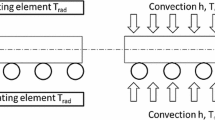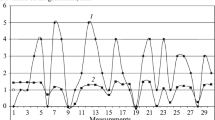An algorithm for controlling the tempering process for automobile glass is simulated. It is shown that the mechanical properties of the glass produced can still be improved. The effectiveness of using modeling for developing corrective actions in the production of tempered glass is validated.
Similar content being viewed by others
References
R. I. Makarov and E. V. Suvorov, “Mathematical description of the process of tempering of automobile glass,” Steklo Keram., No. 5, 12–14 (2009); R. I. Makarov and E. V. Suvorov, “Mathematical description of the toughening of passenger vehicle window glass,” Glass Ceram., 66(5–6), 162–164 (2009).
Yu.M. Korshunov, Mathematical Foundations of Cybernetics [in Russian], Énergiya, Moscow (1972).
Author information
Authors and Affiliations
Corresponding author
Additional information
Translated from Steklo i Keramika, No. 1, pp. 3–5, January, 2010.
Rights and permissions
About this article
Cite this article
Makarov, R.I., Suvorov, E.V. & Obukhov, Y.M. Modeling the tempering of automobile glass for developing corrective actions. Glass Ceram 67, 3–5 (2010). https://doi.org/10.1007/s10717-010-9217-4
Published:
Issue Date:
DOI: https://doi.org/10.1007/s10717-010-9217-4




